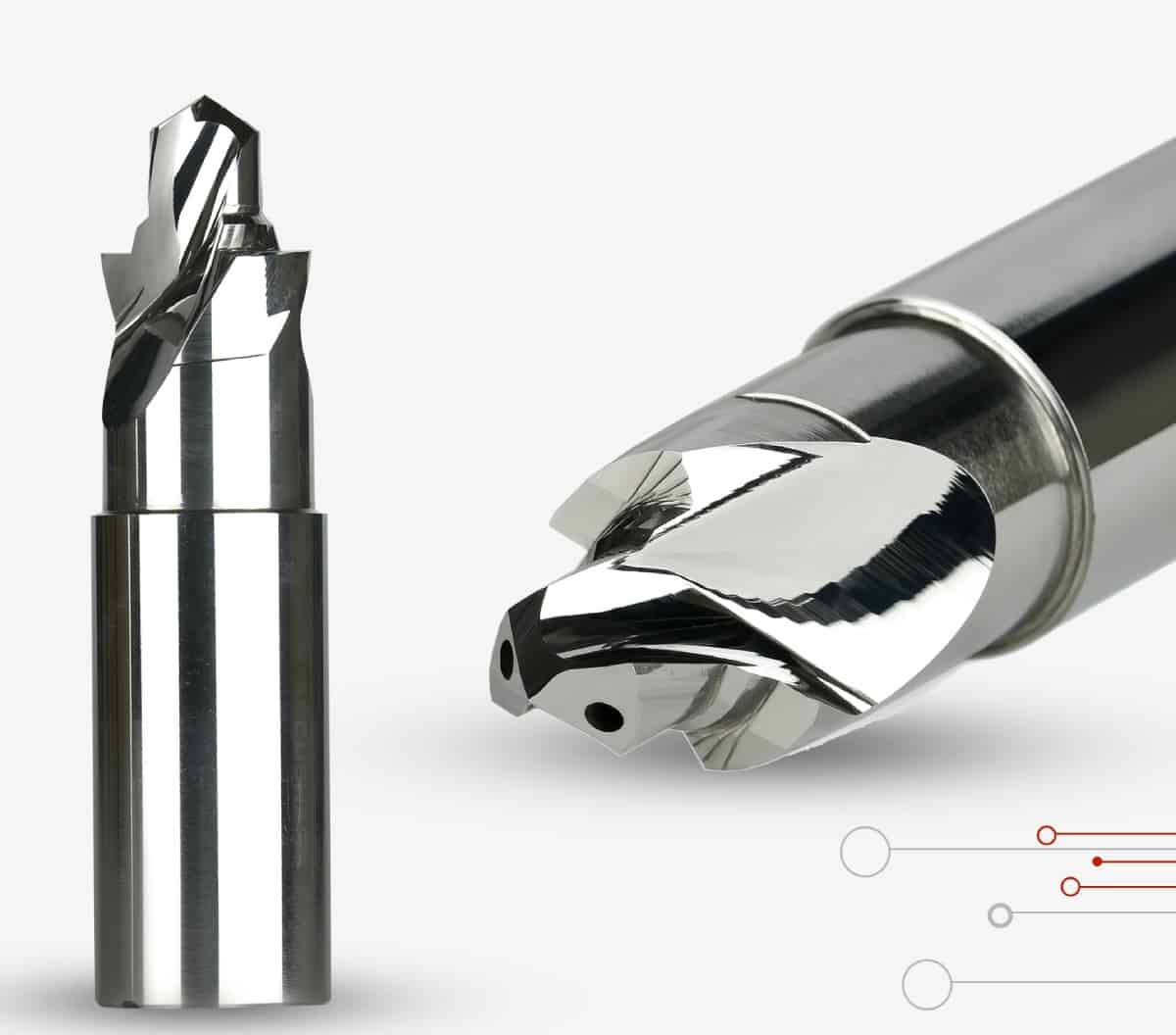Precision machining necessitates the incorporation of some complex factors, such as the size of the feature, the tools used, the machine’s capabilities, etc. With the aid of the best tools and approaches, all of these factors come together. The movement of the machines’ tools is controlled by programmed software during the manufacturing process of machining. The most cutting-edge tools ever made are cutting tools, whereas refining tools serve as the foundation of every expert machining task. In CNC milling and cutting tools, carbon steel, high-speed steel, ceramics, rotation direction, chip formation, and chip load are the most frequent materials you’ll come across. Numerical control (also known as CNC) is the automated computer-based control of machining instruments like drills, boring tools, lathes, and 3D printers. A CNC machine is a motorized tool that a computer uses to carry out precise input commands.
- End Mills
While drill bits and end mills are similar, end mills are much more versatile. They can quickly remove bulky amounts of material thanks to the up to eight pointed flutes that are frequently present on their ends and sides. An end mill is your go-to tool if you want to cut directly into a material without needing a pre-drilled hole (or spot).
- Face Mills
Before you can perform substantial milling operations, the starting material (or workpiece) utilized in CNC milling machines typically needs to go through some kind of preparation.
Utilizing specialized cutting tools called face mills, you can make flat areas of the workpiece before carrying out sophisticated cutting operations. The body of this tool is strong, and it comes with a range of interchangeable cutter inserts that may be changed out as necessary.
- Thread Mills
As the name suggests, thread mills are CNC cutting tools used to produce threads. They serve a similar purpose as taps. But unlike taps, which can only cut internal threads, CNC machines with thread mills can cut both internal and external threads.
Thread mills are the best option if you wish to cut through sturdy metals or asymmetrical components.
- Fly cutters
Fly cutters consist of a body that has one or two tool bits placed into it. Where tool bits make deep and shallow-facing cuts, the entire unit rotates. Fly cutters are similar to face mills in that they are used for face milling and have interchangeable individual cutters. Although face mills are more optimal in terms of stiffness, insert indexability, and depth-of-cut capacity, they are also more expensive. In comparison, fly cutters are more affordable. Fly cutters guarantee incredible surface production as they move clockwise around the material’s surface, producing an extreme shine.
- CNC machines with side and face cutters
Another type of cutter, known as a Side and Face cutter, has cutting teeth on both its side and its perimeter. Depending on the use, they are produced in a variety of widths and diameters. Before end mills took their place, this type of cutting tool for CNC machines was frequently utilized in applications.
- Mill Hollow
Cutting tools in the form of hollow mills revolve and surround cylindrical workpieces. They have three cutting edges or more. With this cutting tool, you may easily and rapidly generate a pre-thread diameter. They can also be used in drill press operations for finishing projections that need to be in a certain location.
- Drills for Center Spotting
Before drilling, these reliable instruments are used to make an accurate conic hole. They stop drill bits from boring improperly. The first point a carbide drill should make contact with your part should ideally be the center, and the point of the spotting drill should be slightly larger than your drill. Spot drilling is typically used when a drill might have the propensity to wander from the center. They are meticulously made to guarantee a perfectly formed hole for a twist drill, preventing deflection and walking away from the center.
- Ball Nose Cutters
Slot drills and ball nose cutters are similar tools, but the cutters’ ends are hemispherical. They work well for 3D shape machining in machining centers. They are also used to add radius between perpendicular sides to lower stress concentrations and are sometimes referred to as ball mills. Bullnose cutters are those with rather large corner radii. Their hemispherical forms make them simple to recognize. It also goes by the name ball end mills and reduces stress concentration.
- Reamers
Let’s imagine a piece of work requires a 1/2 “create a hole – If we assume you can use a 1/2 now “drilling bit -Wrong! If you do this, your workpiece probably has a larger hole when you’re done drilling.
It is advisable to begin drilling this hole with a smaller drill bit, like a 31/64″, and subsequently, widen it to 1/2″ with a reamer. Reamers provide you the option to enlarge already-existing holes while keeping exact measurements and tight tolerances.
- Flutes
The cutting edges of every end mill are machined into the tool’s side. These provide ejected chips with a convenient path to move along as a tool as they cut away at the material block. Considerations for flutes range from single flutes and the best one relies on the material you want to cut and the capabilities of your machine. When utilizing a cutter with too many flutes, the tool may become clogged and overheat.
The best tool option will rely on your design’s geometric complexity, material selection, surface polish, and allowable tolerance range, among other factors. When making your pieces, you may need to use one cutting tool sometimes, or you may need to use two or more.


